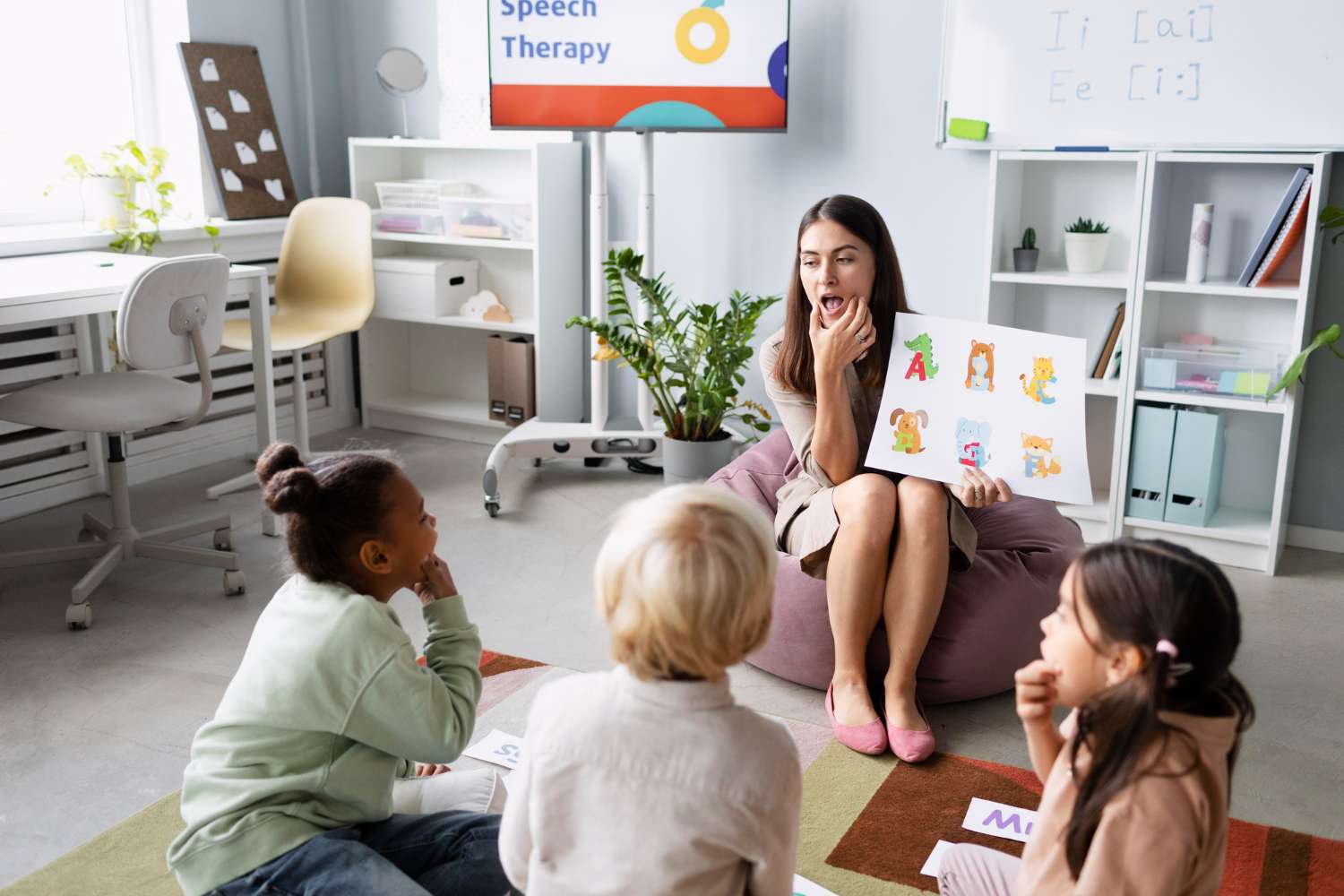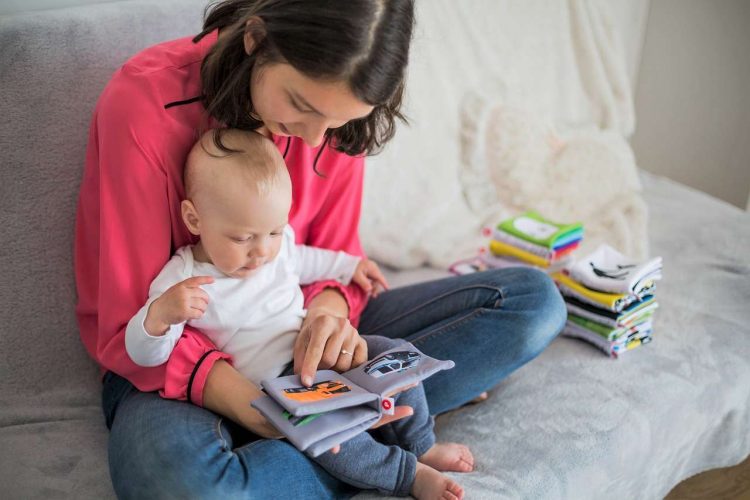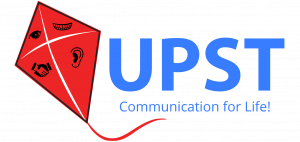Services
Speech and Language Screening and Evaluation
Standardized and Non-standardized Methods

Speech screenings identify those who may be likely to have speech and/or language differences that could interfere with education, development, or communication. Screening results, based on age-leveled criteria, either indicate a need for further, more comprehensive testing, or not.
Comprehensive speech-language evaluations are procedures used to assess the articulation and language systems, delineating strengths, deficits, and potentially contributing factors for a communication impairment.
Assessments involve gathering case histories, completing formal and informal measures of receptive/expressive language, fluency, oral motor/articulation skills, pragmatic language and phonemic awareness, as well as collecting language samples.
Voice, pitch, and loudness are also observed. Cognitive-communication impairments can be assessed by examining one’s memory and attention.
After the evaluation is completed, interpretations are discussed with the parent and a written report summarizing the results is completed along with a treatment plan targeting specific areas of deficit as delineated during the evaluation.
Speech and Language Intervention
Goal Setting and Treatment

Treatment is conducted to achieve improved or augmented speech/language. Goals for therapy may be short or long-term communication goals and are meant to represent language skills commensurate with chronological age, current abilities, and prognosis. Specific objectives address areas of deficit as identified on the evaluation, and focus on concepts to expand and improve the processing of language skills. The overall length and duration of therapy is highly variable.
Articulation-specific objectives remediate error sounds. Oral-motor tasks may be utilized to teach placement for sound acquisition and/or feeding deficits. If fluency skills are addressed, different fluency-enhancing techniques will be taught to facilitate non-stuttering behaviors. Voice therapy focuses on appropriate vocal care and hygiene, as well as use of respiratory, phonatory, and resonatory processes to achieve desired vocal production.
Parental involvement is crucial in the therapy process. Upstate Pediatrics encourages home practice to reinforce carryover and generalizing speech across home, school, and community settings.
Brain Training and Integrated Listening Systems
Effectively Retrain Parts of the Brain

The speech-language pathologists at Upstate Pediatric Services are certified practitioners for integrated listening systems (iLs). These are programs that retrain parts of the brain in learning, communicating, and moving. iLs combines an auditory program with vision and balance activities to strengthen neurological pathways for learning and processing. The treatment protocol is clustered according to three basic areas: sensory/motor, concentration and attention, and reading/auditory processing. The speech-language pathologist determines which program would be most beneficial to your child. After the receptive phase of the iLs phase is completed, an expressive phase can be implemented, focusing on highly developed interactive speaking and listening skills for auditory processing.
Children and adults with diagnosed ADD/ADHD, have been noted to have insufficient utilization of their brain waves. EEG Biofeedback has been noted as one of the best, effective, non-invasive, alternative treatments to medication. Through biofeedback computer technology, our patient is evaluated through brain-map imaging to measure electrical waves. Training includes EEG, or electroencephalography, a measurement of electrical activity along the scalp. These measurements correspond to the ionic flow of neuronal activity in the brain. Patients are observed and mapped and/or remapped to show the amount and distribution of the waveforms that contribute to overall processing/inattentiveness. Through the neurofeedback, patients learn how to retrain their brains to concentrate and attend at optimal levels. Neurofeedback has been recognized as a Type I best treatment by the American Academy of Pediatrics.
Reading Assessment and Intervention
Literacy Needs

If warranted, different assessments for phonological awareness and decoding may be utilized to assess the graphemic aspect of language. Testing can include varying tasks of phonological awareness-phonemic awareness, blending, segmenting, and phoneme manipulation. Also, single word decoding will be examined. Reading accuracy, rate, and fluency are crucial elements to assess in order to determine one’s ability to merge into comprehending written information.
The trained, experienced clinicians at Upstate Pediatric Services utilize several different reading intervention programs, including Lindamood Bell Lips, Seeing Stars, and Visualizing/Verbalizing, and the Wilson Reading System. The most important feature to any program used by our office is a strong multi-sensory language approach to learning reading. Decoding is broken down, and begins with a strong phonemic awareness and individual phonemes are taught and reinforced through feeling how the sounds are produced, and then sounds are sequenced into syllables and words. Visualization strategies are often taught for comprehension of sentences, paragraphs, and passages of reading materials, directly linking reading and listening.
Writing Assessment and Intervention
Expressive Language Through Writing

If oral-written expressive language deficits are suspected, the speech-language pathologist may wish to assess the written language component. Writing conventions and content/organizations are analyzed using formal and informal measures.
Intervention may include overall executive functioning components-written sentence formulation, organization of ideas, summarizing, editing/writing grammar, proofreading, punctuation, and dictionary/thesaurus use.
Math Assessment and Intervention
Language-Based Math Focus

Many people with auditory processing disorders can struggle with math due to the memory requirements. Upstate Pediatrics believes it is essential to have a deep understanding of the base ten numeral system, the patterns/numeric relationships within it, and the mathematical rules that govern it. Language-based math intervention includes systematically teaching and strengthening the ability to visualize, identify and attach meaning to a numeral to an equation. This language-based approach is as significant for math, as it is for reading. Language-based math instruction using semantic and visual concepts is crucial for true, functional understanding.

